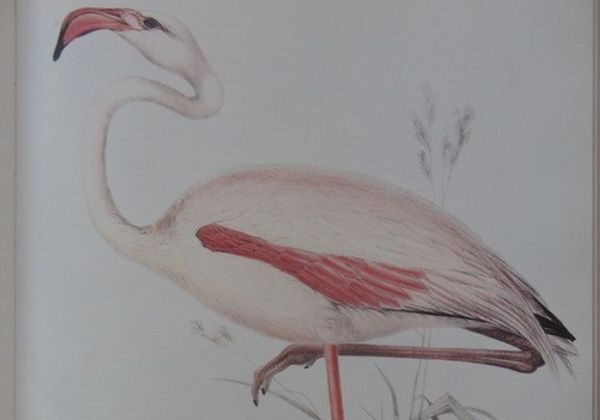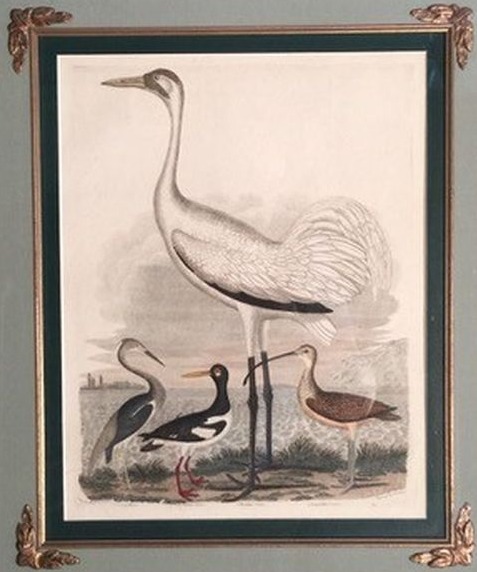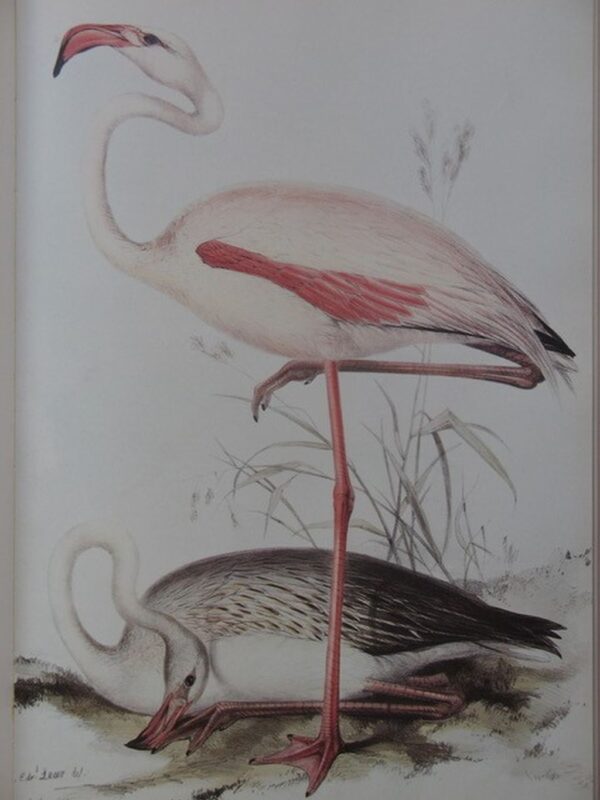Lear’s Flamingo Is the 5th

In the history of flamingo painting, following the first notable four, the next notable rendition is Edward Lear’s (1812-1888), who painted the captivating bird dramatically assuming the pose of a ballerina.
The first was painted by the Governor of Roanoke and the next by Mark Catesby (1679-1749), an English nobleman and explorer.
Alexander Wilson — the father of American ornithology — was the third to paint the flamingo, ahead of John James Audubon. More details about that in “Wilson beat Audubon to the Birds.”
Sarah Stone (1760-1844) was the fourth painter to capture a flamingo on paper.
Lear, while the fifth bird illustrator to capture the flamingo, was one of the best bird artists in history with many “firsts” to his credit.
Lear was the first to use the large folio size paper; the first to work from living specimens; the first to devote an entire book to one family of birds, and the first to perfect and use the new format of lithography.
He is best known for his incredibly beautiful Illustration of the Family of Psittaciae: or Parrots, published between 1830-32.
Lear’s flamingo painting is from John Gould’s Birds of Europe, published in 1832. Lear probably painted this flamingo from a live bird at Knowsley Hall, one of the largest private menageries in England owned by Lord Stanley, Earl of Derby.
Lear was hired by John Gould to assist his wife, Elizabeth, to paint the birds of Europe, and Lear taught her the finer points of bird illustration and the new technique of lithography.
Unfortunately, Lear’s eyesight failed at an early age and he was forced to give up the fine and exacting work of bird illustration. He left England for Italy in 1827 and spent the rest of his life traveling, painting landscapes, and writing hilarious limericks and nonsense verse for children.
It was Alexander Wilson, noted above as the third flamingo painter, who published the first book in America of America’s birds in hand-colored lithographs. Alexander Wilson discovered nearly 50 new species of birds, and more birds are named in his honor than any other person in the world: Wilson’s Warbler, Wilson’s Plover, Wilson’s Phalarope, Wilson’s Petrel, Wilson’s Snipe, Wilson’s Tern, and Wilson’s Thrush.

Inquire [email protected] for pricing on this Whooping Crane print by Alexander Wilson; available framed or unframed.
Some of Wilson’s prints can still be obtained, including this Whooping Crane, available framed or unframed.
Information on available prints is available on their Member Page. Or email [email protected].























